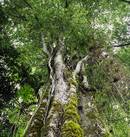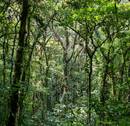Noticias
Brazil presents preliminary results from the National Forest Inventory carried out in Caçador
15/03/2019
15/03/2019

On March 14, the Director of Research and Information, Joberto Freitas, presented preliminary data from the National Forest Inventory (NFI) at an event held in the municipality of Caçador, Santa Catarina. The meeting gathered representatives of the Municipal Secretariat for Agriculture, Rural Development and Environment, City Hall, as well as representatives of forestry production sector and academia. Caçador is the first municipality in the country to participate in the survey conducted by the Brazilian Forest Service. The initiative was a pilot project to adapt the NFI methodology on the municipal scale. The existence of the Caçador Forests Model (Bosque Modelo de Caçador)...

La República Argentina presenta una cobertura de bosques nativos de 53,6 millones de hectáreas (ha), distribuida en siete regiones forestales que abarcan desde bosques templados hasta selvas subtropicales. La pérdida de cobertura de bosques nativos ha tenido un gran impacto en el sector forestal del país. La deforestación sigue siendo un tema prioritario, a pesar de su desaceleración en los últimos años. Entre 2006 y 2008 la tasa anual de deforestación pasó deser de más de 360.000 ha anuales deforestadas a menos de 200.000 ha annuales a partir del 2015. Las causas principales están ligadas al avance de la frontera...

For Russia, the issue of science-based restoration and sustainable, wet management of peatlands is particularly relevant. The urgency is determined by the fact that this type of wetlands perform a number of important ecosystem functions for humans. If there is a functional failure, caused in particular by anthropogenic factors, the negative consequences are numerous and diverse.
Organized by FAO, a round table discussion entitled “Climate-smart agriculture in wetlands and peatlands: Prospect for Russia” was held on 5 March on the premises of the Russian State Agrarian University – Timiryazev Academy. Experts were looking into specific opportunities to further develop wet biomass...

According to a recent study, between 2003 and 2012, approximately 67 million hectares (1.7%) of forest land is burned annually, mostly in tropical South America and Africa. The immediate and long-term impacts of wildfires can be devastating to communities, economies and forest ecosystems. The increase in forest wildfires around the world also threatens the long-term permanence of carbon stocks in all types of forests, as well as forest regeneration and reforestation projects. Many countries in Africa are particularly vulnerable to this threat, with Sudan being one of them. How the country is rethinking its fire management and monitoring in the...

As the most populated country in Africa, Nigeria is facing enormous pressure on its natural resources. According to Global Forest Resources Assessment 2015, the current deforestation rate is estimated at 3.5% - one of the highest in the world. The Federal Government of Nigeria is determined to protect and sustainably manage its remaining forest resources and, therefore, embarked upon REDD+ with support of the UN-REDD Programme – which supported a national programme from 2012 to 2016, and the Forest Carbon Partnership Facility (FCPF).
Overall, the country has been making steady progress since 2010, paving its way for the implementation of REDD+ by taking advantage of available open source...

